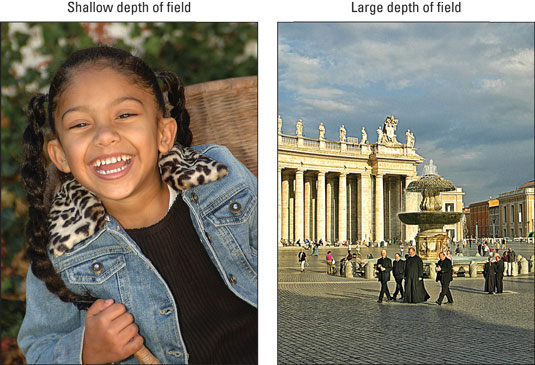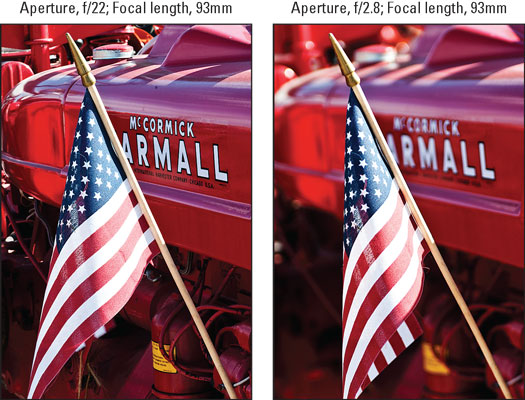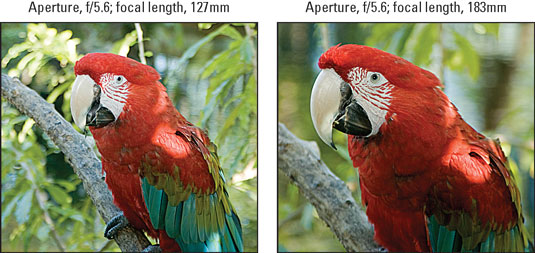- Depth of field refers to the distance over which objects in a photograph appear acceptably sharp.
- With a shallow depth of field, your subject is sharply focused, but objects behind and in front of it appear blurry.
- With a large depth of field, the zone of sharp focus extends to include objects in front of and behind your subject.
 A shallow depth of field blurs the background (left); a large depth of field keeps both foreground and background in focus (right).
A shallow depth of field blurs the background (left); a large depth of field keeps both foreground and background in focus (right).Depth of field depends on the aperture setting, lens focal length, and distance from the subject, as follows:
- Aperture setting (f-stop): Depth of field increases as you stop down the aperture (by choosing a higher f-stop number). For shallow depth of field, open the aperture (by choosing a lower f-stop number). The following figure offers an example; in the f/22 version on the left, focus is sharp all the way through the frame; in the f/2.8 version on the right, focus softens as the distance from the flag increases. The photographer snapped both images using the same focal length and camera-to-subject distance, setting focus on the flag.
 A lower f-stop number (wider aperture) decreases depth of field.
A lower f-stop number (wider aperture) decreases depth of field.- Lens focal length: In lay terms, focal length determines what the lens "sees." As you increase focal length, measured in millimeters, the angle of view narrows, objects appear larger in the frame, and depth of field decreases. As an example, the next figure compares the same scene shot at a focal length of 127mm and 183mm. The photographer used the same aperture and camera-to-subject distance for each shot, setting focus on the parrot.
- Camera-to-subject distance: As you move the lens closer to your subject, depth of field decreases.
 Zooming to a longer focal length also reduces depth of field.
Zooming to a longer focal length also reduces depth of field.Together, these three factors determine the maximum and minimum depth of field that you can achieve:
- To produce the shallowest depth of field: Open the aperture as wide as possible (the lowest f-stop number), zoom in to the maximum focal length of your lens (if you have a zoom lens), and get as close as possible to your subject.
- To produce maximum depth of field: Stop down the aperture to the highest f-stop number, zoom out to the shortest focal length your lens offers, and move farther from your subject.
- For greater background blurring, move the subject farther from the background. The portrait offers an example: Notice that the wicker chair in which my model is sitting appears just slightly blurrier than she does, but the vines in the distance almost blur into a solid color.
• In Live View mode, depth of field doesn't change in the preview as you change the f-stop setting. The camera can't display the effect of aperture on depth of field because the aperture doesn't actually open or close until you take the photo.

